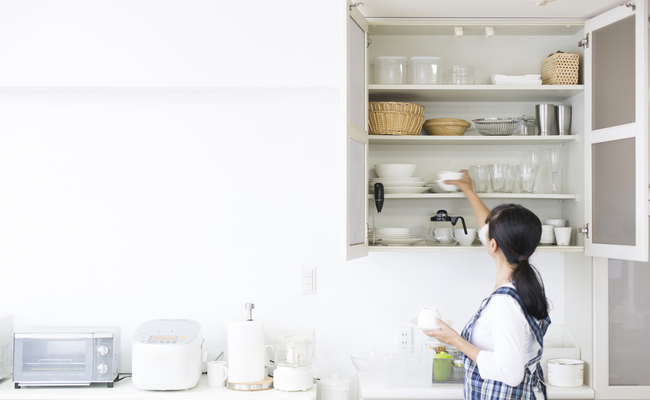Did you know that cork is an eco-friendly building material? That’s right—more and more people are opting to install cork flooring, countertops, and even walls.
Of course, you don’t need to undergo a whole renovation to utilize cork in your home. There are plenty of simple and affordable cork board ideas that will enhance your home while helping you stay organized.
Do you want to know more? Keep reading to discover the top 10 cork ideas you need to try ASAP!
10 Cork Board Ideas That’ll Enhance Your Home:
1. Create a Backsplash:
Luckily, you don’t always need a professional to install cork in your home. If your kitchen backsplash needs a makeover, consider going DIY by using wine corks.
You’ll need to be patient and accurate during this process, but the final result will be unique, durable, chic, and eco-friendly!
2. Give the Whole Family a Board:
There’s no denying how convenient and helpful cork boards are. If you have a busy family, don’t settle for just one cork board—give one to every member of the family!
They can use their board to hang notes for themselves, or they can hang notes on your board to remind you to sign their permission slip for school or to pick up milk on your way home from work.
3. Use Wine Corks:
Have you been collecting wine corks just waiting for a fun way to use them? Well, look no further!
You can create a unique cork board by gluing your wine corks horizontally on a piece of wood or sturdy cardboard. You’ll still be able to hang notes or pictures using pushpins, but your board will look much more stylish.
4. Give It a Fun Shape:
Who says cork boards have to be rectangular? If you’re looking for a fun DIY project to fill up a rainy afternoon, consider making a uniquely-shaped cork board.
You can order cork rolls online or look in your local craft store. Just lay out a section of the roll and outline whatever shape you want your cork board to be in. This could be something simple, like a heart or a star, or you could personalize it by using the first letter of your first name.
Then, cut out the shape and you’re all done! If you want to take this one step further, consider attaching a brightly-colored string to hold photos without having to poke holes in them.
5. Organize Your Jewelry:
Is your jewelry constantly getting tangled up? You may be thinking about investing in a nice jewelry organizer, but you can easily organize your bracelets, rings, and necklaces with a cork board.
All you need to do is use thumbtacks as hooks to hang your jewelry from. Of course, you can dress this up a bit by framing the corkboard or covering it in a piece of fabric.
6. Install Cork Inside Your Cabinet Doors:
Are you constantly running out of room in your kitchen? An easy way to stay organized is to install cork on the inside portion of your cabinet doors.
You can then hang small kitchen utensils, like measuring spoons, on it. This is also a great place to store recipes or your grocery list, so you never lose it.
7. Make Coasters:
Of course, cork can be used for more than just cork boards. You can also create coasters out of small sheets of cork.
You can either go for a fun shape, like the outline of your state or stick with a classic circle and paint designs on it. It’s cute, affordable, and won’t scratch your furniture!
8. Hang Your Dartboard on It:
If you have a dart board in your home, stray darts may have put small holes or marks on your wall. An easy way to keep your dartboard and protect your wall is to use a large slab of cork.
Just hang your dartboard in the middle and let the surrounding cork take the blow from missed darts. You can even decorate this by covering it with a piece of fabric or painting it to match the decor.
9. Put Cork Above Your Keyring Holder:
Do you have a million thoughts running through your mind as you get ready in the morning? A cork board is a great place to hang notes to yourself, so you can just relax with a cup of coffee instead of trying to remember everything.
But the location is everything! Put your corkboard above your keyring holder, so you can see your notes before you leave. If you don’t leave a lot of notes for yourself, you can also get a stylish keyring holder and hang photos on your cork board to decorate your entryway.
10. Create a Travel Board:
Are you constantly counting down the days until your next vacation? Whether you travel once a year or once a month, a travel board can be a fun addition to your home.
Just place a map over a slab of cork and put a pin in every place you’ve been. If you’re travels have been focused in the United States, consider cutting your cork into the shape of the country to make it stand out even more.
The Best Cork Board Ideas:
Don’t settle for a boring old cork board anymore! From organizing your jewelry to creating a travel board, there are tons of cork board ideas that will look amazing and enhance your home.
Of course, it isn’t just the interior of your home that matters. Learn more about installing stone veneers to your home’s exterior to increase its value and curb appeal!
Read Also:






















